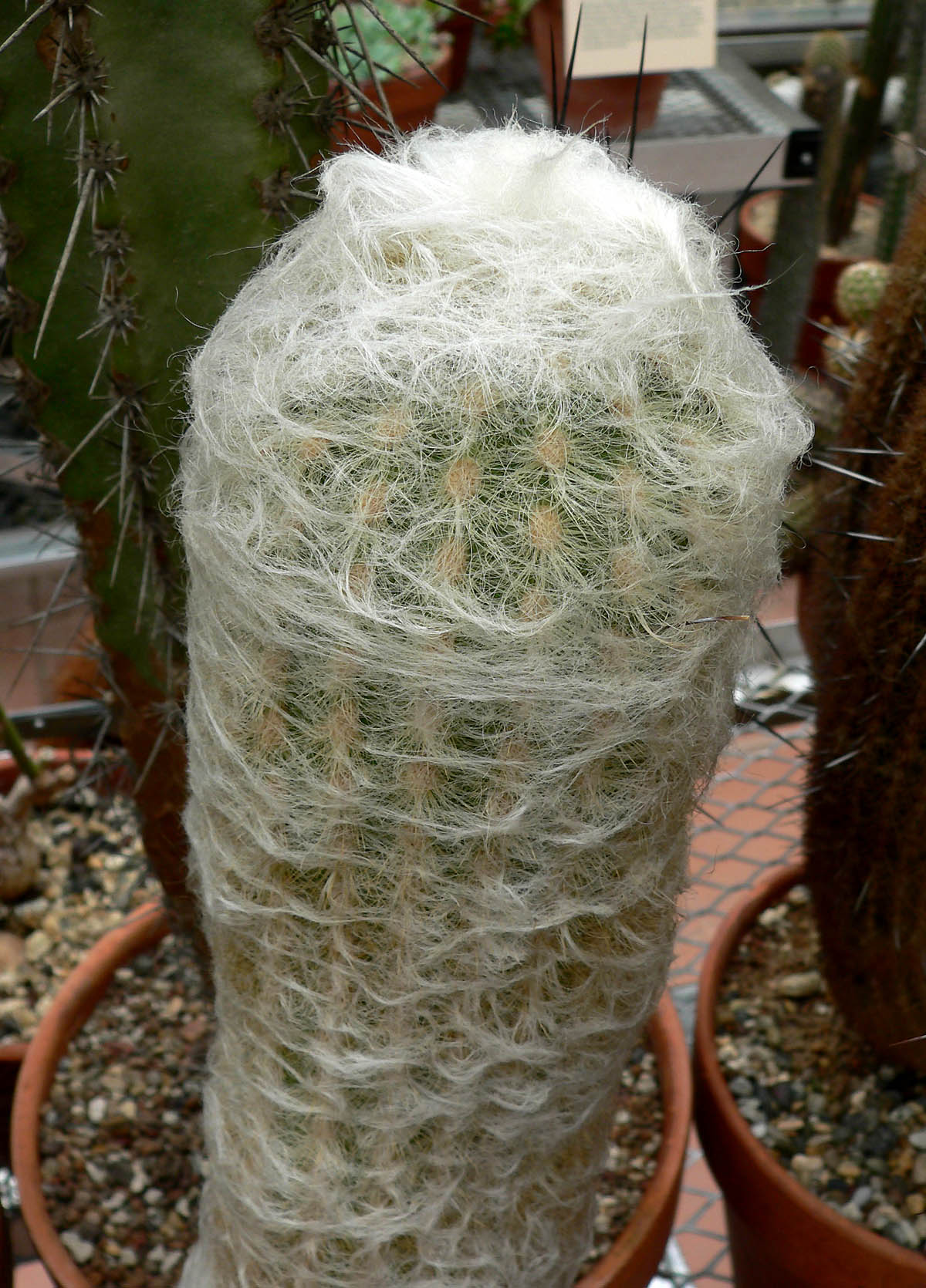- Espostoa
image_width = 240px
image_caption = "Espostoa lanata" var. "gracilis"
regnum =Plant ae
divisio = Magnoliophyta
classis = Magnoliopsida
ordo =Caryophyllales
familia = Cactaceae
subfamilia =Cactoideae
tribus =Trichocereeae
genus = "Espostoa"
genus_authority = Britton & Rose
subdivision_ranks =Species "Espotoa" is a
genus of columnar cacti, comprising 16species known from theAndes of southernEcuador andPeru . It usually lives at an altitude of between 800m and 2500 m . Its fruit is sweet juicy and edible. The genus is named after Nicolas E. Esposto, a renowned botanist from Lima.These candles shrub are covered with thorns and white hair. Only the older specimens can divide.
In adulthood, sometimes appear a
cephalium , like in the Mexican generacephalocereus .They were discovered by
Alexander von Humboldt andAimé Bonpland in the early nineteenth century.They are appreciated for their decorative qualities due to their white fleece. They can be reproduced by seed. But for a fully development, they must be in the ground. The cultivated specimens very rarely flourish (pale pink flowers).
Like all Cacti, Espostoa requires sunny locations and well drained soil. But in summer, he appreciates the contributions of fertilizer and a wetland. In winter, it needs a rest, but the temperature must not drop below 12 ° C.
Taxonomy
Species list
*"
Espostoa lanata " Britton & Rose Sometimes called "old Peruvian man", it is the most common species. Arborescent type tree up to 5 m high in the wild and 1 m in culture. Trunk diameter 5 to 12 cm in diameter, with 20 to 25 ribs flattened obscured by tissue woolly. The white cover is due to long fuses back. The central sharp goads sometimes cross the wool up to 2 inches long. Older plants have acephalium on the side from which appear white flowers at night.
* "Espostoa baumannii "
* "Espostoa blossfeldiorum "
* "Espostoa calva "
* "Espostoa frutescens "
* "Espostoa guentheri "
* "Espostoa huanucoensis "
* "Espostoa hylaea "
* "Espostoa lanianuligera "
* "Espostoa melanostele "
* "Espostoa mirabilis "
* "Espostoa nana "F.Ritter
* "Espostoa ritteri "
* "Espostoa ruficeps "
* "Espostoa senilis "
* "Espostoa superba "Synonymy The following genera or species have been included in this genus:
* "Pilocereus dautwitzii"
*"Binghamia" Britton & Rose
*"Pseudoespostoa"Backeb.
*"Thrixanthocereus"Backeb.
*"Vatricania"Backeb. Bibliography
* Innes C, Wall B (1995). "Cacti' Succulents and Bromaliads". Cassell & The Royal Horticultural Society.
* Edward F. Anderson : "The Cactus Family" (2001)External links
* [http://www.cactiguide.com/cactus/?genus=Espostoa photos onr www.cactiguide.com]
* [http://holiday.monacoeye.com/jardinexotique/cactusphotos/page7-1043-full.html Espostoa guentheri]
* [http://www.aiaps-photos.org/recherche_simple.php?a=r&t=s&motsclefs=Espostoa photos on www.AIAPS.org]
Wikimedia Foundation. 2010.

